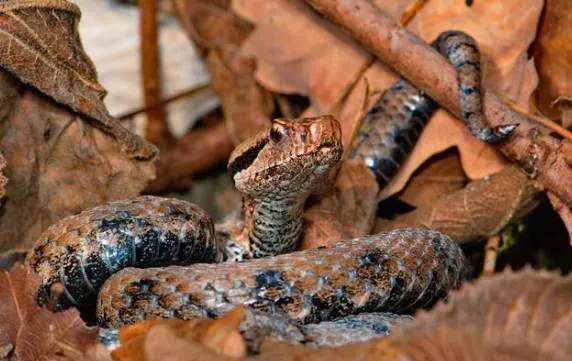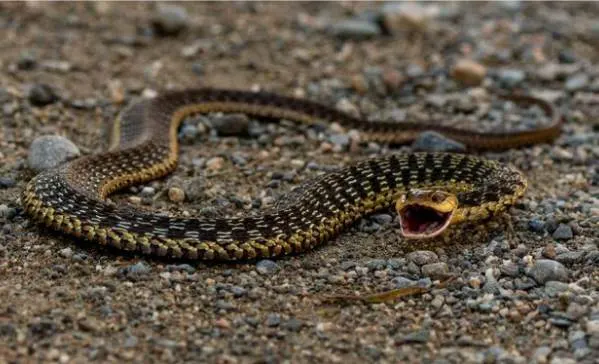The asp, scientifically known as Vipera aspis, is a venomous snake native to parts of Europe. This reptile has a rich history intertwined with ancient Egyptian and Greco-Roman cultures. Despite its long-standing symbolism and feared venom, the asp is a creature of significant ecological importance and intriguing behavior.
Table of Contents
Scientific Classification and Conservation
Belonging to the family Viperidae, the asp is classified under the genus Vipera. Despite its fearsome reputation, the asp is listed as “Least Concern” by the International Union for the Conservation of Nature (IUCN), indicating a stable population. However, specific subspecies face various levels of threat due to habitat loss and human activities.

Habitat and Distribution
Asps are predominantly found in several European countries, including France, Italy, Switzerland, Germany, and Spain. They thrive in warm, sunny environments with ample vegetation, often near streams or forest edges. These snakes are adapted to a variety of habitats, from hilly areas and scrublands to lower mountain slopes.
Physical Characteristics
One can easily identify an asp by its broad, triangular head and upturned snout. Males typically exhibit gray coloration with a distinctive zig-zag pattern, while females may range from gray and brown to orange. The asp can grow up to three feet in length and possesses long, curved fangs capable of delivering potent venom.
Behavior and Diet
The asp is a diurnal and crepuscular predator, meaning it is most active during the day and twilight hours. It employs an ambush hunting strategy, lying in wait for unsuspecting prey such as rodents, birds, and lizards. Despite their venomous nature, asps are not aggressive towards humans and will usually retreat if given the opportunity.
Venom: A Double-Edged Sword
The venom of an asp is highly potent, causing intense pain, swelling, and potentially severe tissue damage. While most bites result in dry bites, where no venom is injected, the risk of a venomous bite remains significant. Immediate medical attention is crucial in the event of an asp bite, with antivenom treatments available to counteract the effects.
Reproduction and Lifespan
The breeding season for asps occurs in spring, with females giving birth to live young after a gestation period of three to four months. A typical litter consists of 5-12 snakelets, which are independent and capable of hunting within days of birth. Asps can live up to 20 years in the wild, making them long-lived among snake species.
Conservation Efforts
While the asp as a species is not currently endangered, certain subspecies face significant threats. Conservation efforts are vital to protect their habitats from further destruction due to urbanization and agricultural expansion. The Berne Convention on the Conservation of European Wildlife and Natural Habitats provides some level of protection to these snakes, highlighting the need for continued conservation initiatives.
A Symbol of Royalty and Death
Historically, the asp held a significant place in Egyptian and Roman lore. It was seen as a symbol of royalty and power in Egypt, and its bite was infamously used for executions during Greco-Roman times. The most famous tale involving the asp is the legendary suicide of Queen Cleopatra, who reportedly allowed herself to be bitten by an asp. However, modern historians debate this account, suggesting that she might have used a mixture of poisons instead.

7 Fascinating Facts About Asps
- Long, Hollow Fangs: Asps have long, hollow fangs that can rotate independently, allowing them to conserve venom.
- Diurnal Predators: Unlike most vipers, asps are active during the day, making them diurnal predators.
- Ambush Hunters: Asps use an ambush hunting technique, waiting in hidden locations to strike at passing prey.
- Egyptian Symbolism: Despite their association with Egyptian culture, asps are not native to Egypt. The Egyptian symbolism likely referred to a different species, such as a cobra.
- Venom Conservation: Asps can deliver dry bites, which do not inject venom, helping them conserve their precious venom for when it’s truly needed.
- Distinctive Warning Sign: When threatened, asps curl their tail into a circle, raise their front body, and hiss loudly before striking.
- Subspecies Diversity: There are five recognized subspecies of asps, each adapted to specific regions and displaying unique color patterns and behaviors.
The asp remains a creature of fascination and fear, symbolizing both power and danger throughout history. Understanding its behavior, habitat, and role in the ecosystem is crucial for its conservation and the safety of those living in its native regions. While its venomous bite commands respect, the asp is an integral part of Europe’s natural heritage, deserving both protection and admiration.
- Enchi Ball Python: A Unique and Stunning Morph of Python regius - March 27, 2025
- Emerald Tree Monitor: The Enigmatic Green Guardian of the Rainforest - March 26, 2025
- The Egyptian Cobra (Naja haje): A Fascinating Serpent - March 25, 2025
